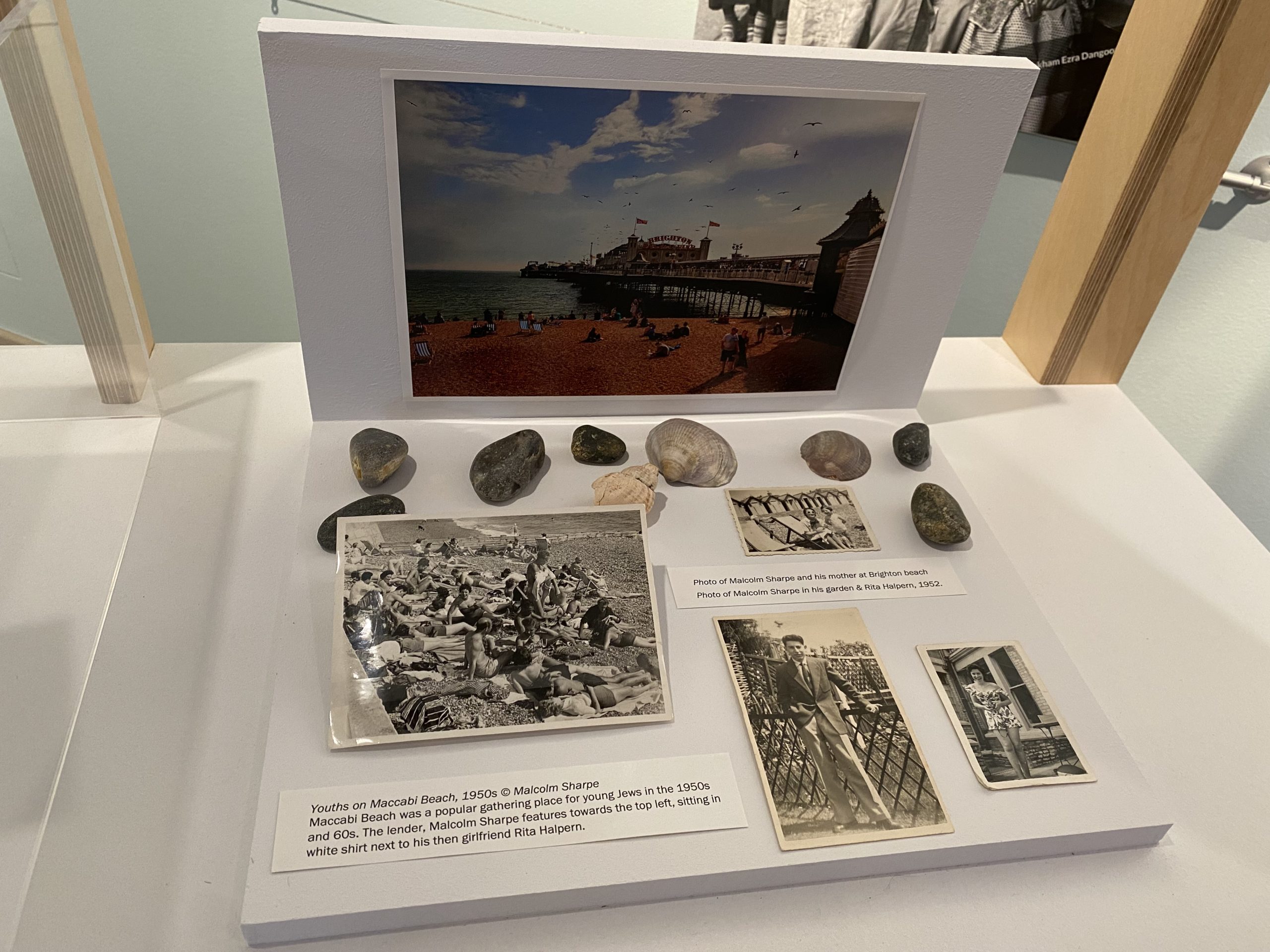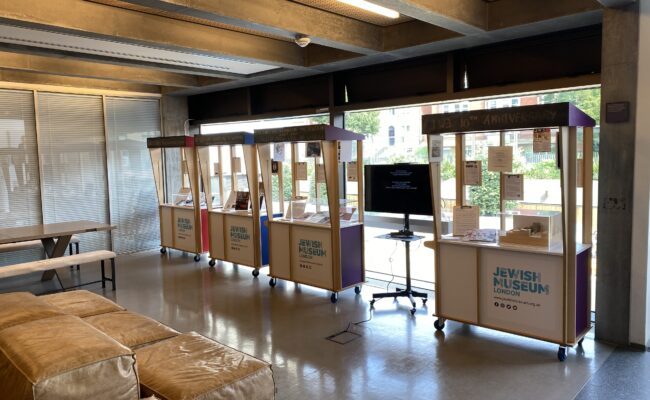BNJC: A conversation between Adam Corsini, Jewish Museum London & Jasmin Aziz, BNJC

Museum: Hi Jasmin, tell us a little bit about the BNJC project, and how you’re creating a sense of identity for Brighton’s Jewish communities.
Aziz: Sure. So our organisation is called BNJC, which stands for Brighton Hove Jewish Community. The whole project started with the goal to revitalise Jewish life in Brighton and Hove. Brighton has 250 years of Jewish history and legacy, with many city’s major landmarks owing their existence to Jewish individuals and philanthropists, like the Brighton Palace pier. But like many provincial communities, Brighton has experienced falling numbers of Jewish residents in the last few decades. In an effort to change this dynamic BNJC was set up in 2017 with the core mission of providing the infrastructure for Jewish people in Brighton to live a Jewish life, however much and in whatever way they choose to. The aim is to revive a historic community to the vibrancy it once was, and to build the facilities to ensure that Jewish life can continue to thrive in the years to come.
Our development is based in central Hove and currently in construction, and we’re hoping to open in the summer of 2022. It will include a beautiful Modern Orthodox synagogue, the only mikvah in Brighton, kosher dining –there’s no kosher restaurants in Brighton at the moment, so we’re bringing kosher food back and a kosher bakery to Brighton as well.
There will be a big programme of cultural events and workshops, and educational facilities for adults and children; a Jewish nursery; a co working space. So everyone will have a chance to be involved in and benefit from having a cultural touch point of Judaism. When we open our doors, we want to welcome everyone in the UK to come and join us and share Jewish culture by the seaside.
Museum: I really like that its multi-generational; you’ve got things from nursery to old ages. I imagine you’ve had a really good positive response so far?
Yeah, it’s exciting. Brighton is a community where even though it’s small, it’s really dynamic. There’s two Orthodox synagogues, as well as a Reform congregation and a Progressive congregation. And I think it’ll be just such an exciting facility for all the community to enjoy. Also for the national Jewish community to, you know, put Brighton back on the Jewish map.
Selecting an object
Museum: Tell us more about the objects that you’ve picked.
Aziz: the objects I’ve chosen are a selection of original photographs of Brighton and Hove in the 1950s. We’ve chosen these because they depict the vibrant Jewish community at the time.
The group photo is at ‘Maccabi Beach’, which was the name dubbed for a very specific part of the beach, at the bottom of Brunswick Square in Hove. For me, it represents the core of our revitalization vision for the Jewish community in Brighton and Hove. The Brighton Jewish youth in the 1950s was a real vision of a community coming together and of shared Jewish culture from across the spectrum. And the BNJC vision is to build the infrastructure to support this; we want to bring back the vibrancy of that Jewish youth and honour that legacy by recapturing that feeling again.
This photo was submitted to us by Malcolm Sharpe who was raised in Brighton and Hove. Maccabi beach was the “place be seen” venue for the local Jewish community, particularly on any summer weekend when the weather was good. It’s noted that in the photo, you can see Jantzen swimwear which was the required uniform of the day. Cobleys, the local store always had the best selection.
During the meetups, important matters of the day were discussed, including popular 78s – long playing discs, being played on radio Luxembourg, who was going out with whom, and which coffee bar they should meet at in that evening. There’s also lots of memories about regular house parties and people gathering together at coffee bars along Barton road. Apparently, teenagers met at local coffee bars, spending the whole evening talking over a single cup of espresso which only cost 9p.
There was a Hove coffee bar in particular called Cobana, which was near the Maccabi event hall, which everyone used to go to after the beach. A lot of people I’ve spoken to said that they’re sure many local “shidduchs” commenced at that venue, which was an integral part of the youth scene for many years.
It was very cross denominational, and a very accepting youth space. Jewish youth from all congregations came together. You can see Malcolm who submitted the photo right at the top there with his with a white shirt on looking away from the camera. And right next to him is his girlfriend of the time as well. He also submitted some other photos of them alongside it. Another is of him as a child by the Brighton Beach huts with his mother. And I think it’s quite a similar location to this Maccabi beach setting.
Brighton’s Jewish youth enjoyed the new rock and roll scene and were often joined by teenagers from London Jewish community and those from abroad. I think it really was the time of teenagers; the concept of a teenager becoming a thing, and I think Jewish youth at this time enjoyed a lot of freedom and independence that their parents definitely wouldn’t have had.
I think this is a real snapshot of the golden era of Jewish youth in Brighton. And what makes it so different from today is that a lot of young Jewish people stayed on after that education, and continue to live in Brighton rather than leaving and going to live in other areas of the country. And that’s not something that has continued to happen in Brighton at the moment. So the core of our revival project is to build a community facility so Jewish people can have the choice to stay and feel supported to live a Jewish life in their hometown, and maybe even those living further afield will consider making Brighton their home too.
—————————————————————————–
For more information visit: www.bnjc.co.uk
Follow BNJC on social media @BNJCbrighton
